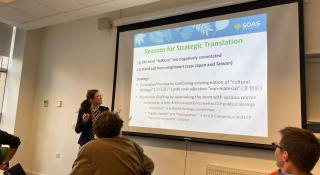
Breadcrumbs navigation
The double-helix entanglements of transnational advocacy: Moral conservative resistance to LGBTI rights
In this short summary video authors Phillip M. Ayoub and Kristina Stoeckl discuss their key arguments from their new Review of International Studies article - ‘The double-helix entanglements of transnational advocacy: Moral conservative resistance to LGBTI rights'.
Want to know more? You can read the full article at DOI: https://doi.org/10.1017/S0260210523000530
This particular article is open access, however BISA members receive access to all articles in RIS (and our other journal European Journal of International Security) as a benefit of membership. To gain access, log in to your BISA account and scroll down to the 'Membership benefits' section. If you're not yet a member join today.
Abstract
The rights of people who are marginalised by their sexual orientation and gender identity (LGBTI) have improved in many countries. Largely, these achievements can be traced back to the ‘spiral model’ of factors including transnational mobilisation by the LGBTI rights movement, the actions of a few pioneering governments, and advances in the human rights frameworks of some international organisations (IOs). Yet a rising and increasingly globally connected resistance works against LGBTI rights. It rests predominantly in the hands of a transnational advocacy network (TAN) that attempts to lay claim to international human rights law by reinterpreting it. Drawing on a decade of fieldwork and 240 interviews with LGBTI, anti-LGBTI, and state and IO actors, this article explores how the conservative TAN functions, in terms of who comprises it and how its agenda is constructed. We argue that this TAN has employed many of the same transnational tools that garnered LGBTIQ people their widespread recognition. It also conforms to the spiral model of rights diffusion, but in a process we call a double helix. As the double-helix metaphor suggests, rival TANs have a reciprocal relationship, having to navigate each other’s presence in an interactive space and thus using related strategies and instruments for mutually exclusive ends.
Photo by Anastasiia Chepinska on Unsplash


